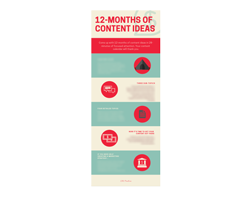If finding new prospects for your pipeline is causing you trouble, follow this simple, 5-step process to attract clients who are pre-sold on what you offer before you ever get them on the phone.

When I was a kid we’d go camping all the time, and one of my favorite memories was of late night snipe hunts.
My parents would give me and my siblings some bags and tell us to wait in the high grass. Then they’d stomp through the woods, scaring the snipe toward us.
Our job was simple: bag the snipes.
What happened at that point was anybody’s guess.
When the “hunt” would kick off, the adults would come through the field yelling, and crashing, and making ridiculous “snipe calls”–all while we waited.
Of course, there were no snipe–it was really just a game… but sometimes new business can seem just as imaginary.
Take a good buddy of mine who owns a good sized business automation company. He’s done very well, but recently asked if I had any ideas of how to fill their pipeline.
Like a lot of business owners I talk to, their success and growth had come primarily through “referral marketing”. (This is a fantastic way to build a business, by the way.)
But he was looking for something that would get them on offense, rather than leaning so hard on the networks of their clients.
“No problem,” I told him.
But before we dug into a strategy to help him bring in qualified leads, we first nailed down…
HOW PEOPLE VIEW THE PROBLEM THAT’S LIVING RENT-FREE IN THEIR MIND
One of my favorite ways to describe businesses of all kinds is summed up by legendary direct response marketer TJ Rohleder…
To paraphrase, every company does one of these three things:
- It does something nobody wants to do–ever.
- It does things people “can’t be bothered” with doing–or things that they’d rather not do.
- It does tasks (or sells products) that they’re naturally positioned to do fairly easily, but that other people are terrible at doing.
Why do we need to figure out which category my friend’s business falls into?
Actually, we need to figure out which prospects think of his business in terms of each category. Getting this right tells us the prospect’s mindset, and also tells us how to position the service.
Onward…
Once we figured out the kinds of people to target and the mindset their mindset about the problem, we pinpointed the next crucial step to…
CAPTURE YOUR PROSPECT’S ATTENTION AND IMAGINATION
If we know that a group of prospects view the problem you solve as something they’d never want to tackle on their own (or would rather not spend the time to figure out), then the solution to them is less subtle: if they want it bad enough, and you’ve positioned yourself as a trustworthy and fair dealer, then there’s a decent chance they’ll go with you. Just create a vision of their current problem, paint a picture of what life will be like when they sit back and let your team make it happen and you’ve got a decent shot at the business.
But if your prospect sees the problem as something they don’t know how to solve, then the technique I laid out for my friend could be a strategy that brings you clients who know what you do, know how you work, and are eager to buy what you’re selling.
What is this strategy?
SHOW AND SELL
There’s an old marketing adage that you tell your prospects WHAT to do, and you sell them HOW to do it.
This is a little like that, but you give your prospects a couple options.
To illustrate this, let’s bring my friend’s business automation company back into the picture.
For him, my advice was to do the following:
- Figure out where your best clients are (i.e., LinkedIn, Facebook, Trade Magazines, Conferences)
- Identify the biggest pain point you see among all your clients. Make a list of your clients, and record what their biggest troubles were when you started working with them. Highlight the problems that repeat across multiple clients–these are the topics you’re going to teach about.
- Teach what you do to address these problems. Remember, you’re teaching WHAT you do to address it, not how. How do you teach it? Video, podcasts, newsletters, emails, blog posts, in-person speeches–there’s a thousand ways to get your ideas across.
- Give them a chance to buy the solution so they don’t have to figure it all out on their own.
“BUT BRIAN, I DON’T KNOW HOW WHAT TO SAY IN THE MESSAGE! WHAT DO I DO?”
You want more??? That’s okay… I’m all about going above and beyond 🙂
But seriously, if you’re not sure how to format the content, this is how I’d format any video, blog post, or whatever mode of content you feel most comfortable using…
The format I’m referencing was made famous by Gary Halbert, and makes everything incredibly easy.
Star – Story – Solution
And we’re going to modify it a bit into Problem – Story – Solution.
So here’s what it looks like…
- PROBLEM – Identify the problem that’s wreaking havoc on your prospect’s life. Show empathy, that you understand their pain, and you know the devastation it’s causing. Now really lean into this pain, and talk about the consequences of not dealing with it. Paint a word picture and make sure they see the problem and its consequences in their mind before you move on.
- STORY – Tell a story they can relate to. “Bob Reynolds from Acme Light and Candy came to me with this problem. You wouldn’t believe how…” Anyways, you get the idea. You tell a story about a client that had the problem you described. You talk about their world, how things were going wrong, and what their world was like before they started working with you. List the problems, get into as much detail as you can–this will drive home the point that you understand their problems, you’ve worked with people like them, and you
- SOLUTION – Tell a story about about what you did to solve this client’s problem. Outline it, explain it, even list your process out in bullet points. You want to give value here, but make sure you’re telling WHAT NOT HOW. Once you’ve done this, give a recap of what you did to help–and then give the audience a way to bypass that process by just buying the solution from you.
Creating content using this outline does a few things for you:
- It shows empathy. This content illustrates that you understand your prospect’s pain, their problems, and what they’re walking through right now.
- You demonstrate expertise. You’ve shown your process. If you’re making a video, you’ve done this live–you’ve shown the audience that you know what you’re talking about, and you’re fluent in their industry and in solving their industry’s problems.
- You give people a way to buy. If someone watches your video all the way through, the video resonates with them, and they’re in a position to buy the solution–more often than not they’re going to reach out and see how you can help them–if not just buying the solution outright.
WHICH MEDIA SHOULD I USE?
This answer will sound glib, but you need to use the media that’s best for your audience.
Personally, I’ve found video to be incredibly powerful.
I think it was retired A-List copywriter Gary Bencivenga who said that SHOWING a person how you solve their problem is worth far more than you telling them that you can do it.
Video is the quickest way to SHOW and tell.
But you know your prospects, so use the media that they’re most comfortable using.
Once you have a message that’s resonating with people and filling your pipeline, double-down on that message and get as many of your prospects’ eyeballs viewing it as you can.
RECAP
If you’re struggling to build a pipeline, and you want to fill it with people who are pre-sold on your solution before you get them on the phone, then there’s a few things for you to do:
- Figure out who thinks of the problem you solve as something they’re not able to do for themselves.
- Discover what media your best prospects prefer to consume (i.e., video, print media, etc.)
- Nail down the biggest issues that are common to your best clients.
- Create content using the Problem – Story – Solution format
- Once you find a Problem – Story – Solution that resonates, get as many of your prospects to see that message as possible.
Now you’ve got the roadmap.
Good luck, and if you’re curious about having us create a specific strategy for your business, write to me at [email protected].

